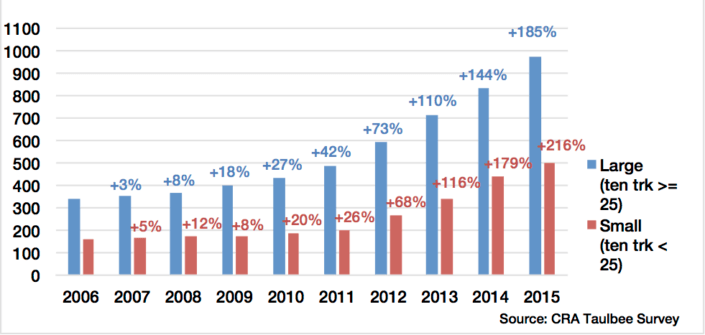Generation CS: Undergraduate Enrollments Surge Since 2006
04-27-2017
Writer(s): Kristyn Childres
Universities and colleges across the country have experienced a significant increase in enrollment in undergraduate computer science courses and programs. The number of CS majors is at an all-time high, and demand from non-majors to enroll in courses beyond the introductory level is surging.
To better understand the enrollment trends and their impact on all resources, the Computing Research Association (CRA) produced a survey and detailed the results in a report: Generation CS: CS Enrollments Surge Since 2006.
The report found that the number of CS majors enrolled at North American doctoral institutions more than tripled between 2006 and 2015, and continued growth seems likely. The report also highlights continued impact on resources like classroom space, lab space, faculty, instructors, TAs and advising, as well as what actions departments have taken to manage the increased enrollment. With increases in tenure-track faculty equaling only 10 percent of the increase in the number of majors, departments struggle to manage enrollments and course demands.
Average enrollment by CS majors at large and small academic units (based on number of tenure-track faculty)

Percentages denote cumulative changes since 2006
The demand for computer science at Purdue
At Purdue, the number of undergraduate computer science majors has grown from 438 in Fall 2008 to 1,490 in Fall 2016. Department Head Sunil Prabhakar said, “We are witnessing an unprecedented demand for computer science. Enrollments have nearly doubled in the past three years, despite the department’s rate for accepting applicants dropping significantly, from 78 percent in 2011 to 44 percent in 2016. The quality of our applicants has gone up, even as our acceptance rate has gone down – another indicator of the surge in computer science interest.”
Diversity and the surge CS enrollments
Generation CS notes that a positive consequence of the current enrollment surge is a significant increase in the number of women and underrepresented minority students in computer science, both in courses and as majors. The report suggests that this period of unprecedented growth in the field may provide an opportunity to increase the diversity of computer science undergraduates enrolled across the country. The report shows that departments that explicitly chose actions to assist with diversity goals attract and retain a higher percentage of females and under-represented minorities.
"It’s important to ensure that the gains in enrollment that we have recently seen can bring the computing industry closer to representing the population that uses the technology we create,” said Susanne Hambrusch, Purdue professor of computer science, CRA’s vice-chair and member of the CRA enrollment committee.
Purdue's steps to increase CS diversity
Purdue’s Department of Computer Science has a long history of commitment to increasing diversity in its programs. In addition to many existing diversity-focused programs, the department has recently created a diversity specialist position. Computer Science is the first and only department on Purdue’s campus to hire a department-level diversity officer.
Download the full report at http://cra.org/data/generation-cs/.